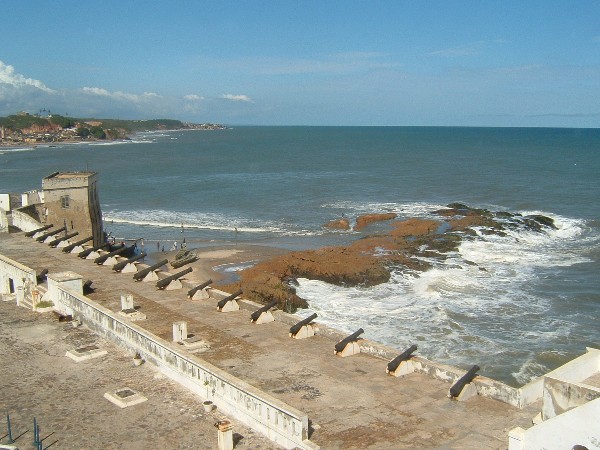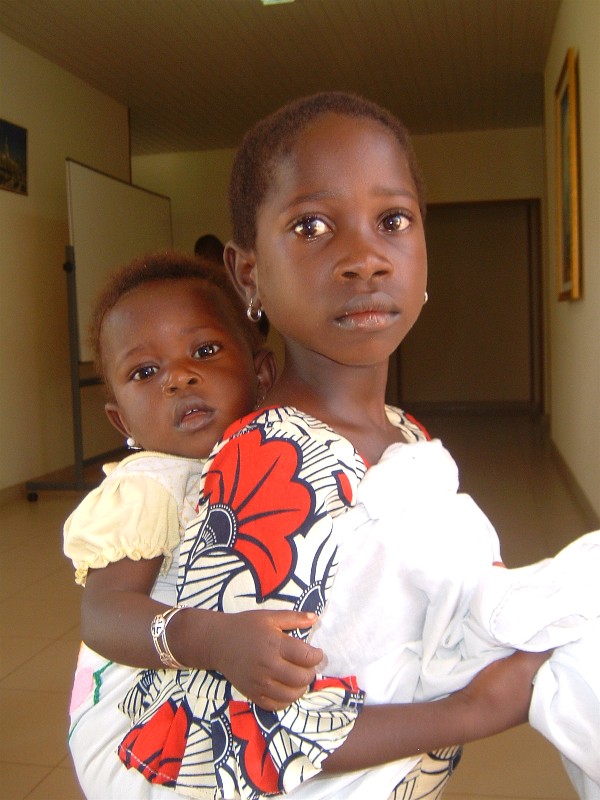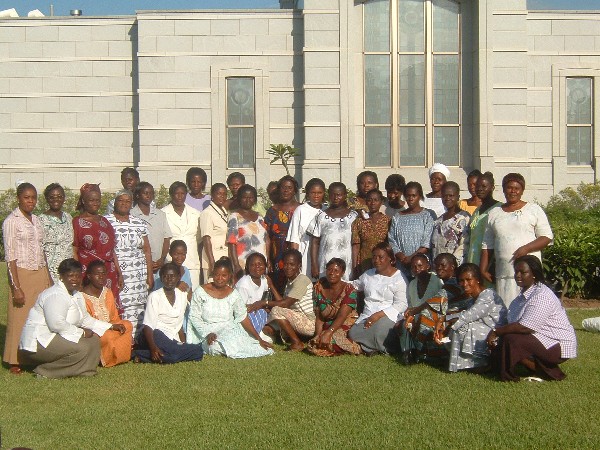
Get along little dogies
When we first got to Africa, we were alarmed to see all of the animals everywhere. There are chickens pecking among the baskets of fruit and vegetables in the roadside markets. There are goats and sheep everywhere, some being driven or tended and others just wandering around freely. Of these free roaming animals, we have often remarked that we have no idea how people keep track of which animals belong to whom. Many times as you get out into the countryside you even see large herds of cattle being driven along the side of the road, as was the case on this day in Koforidua, a beautiful city nestled in the hills of the Eastern Region of Ghana.

Get along little dogies
There is a rainforest preserve in the Central Region of Ghana called Kakum National Park. There is a little visitor’s center there where you can see displays and learn more about the biological connections that take place within a rainforest ecosystem. But the highlight of Kakum is the canopy walkway, which you access by following a park ranger on a 15 minute walk along a path through the edges of the rainforest. The suspended walkway, the only one of its kind in all of Africa, consists of seven segments of swinging rope-secured planks that stretch between six tree trunk-perched platforms. Some of these trees reach heights of 100 meters. The walkway itself is 40 meters (100 feet) above the rainforest. When we were there the guide allowed only one person on each segment at one time. The walkway was carefully designed to depend upon trees for support; no nails or bolts were used. Instead, steel cables were carefully wrapped around trunks to provide the necessary stabilization. Here you see Elder Armstrong making his way carefully across one segment of the walkway. It reminded us of something we had seen in an Indiana Jones movie.

Indy Armstrong
The Cape Coast Castle in Cape Coast, captured from the Swedes by the British in 1664, was started as a small trading fort but soon became the largest Slave Trading Post after Elmina Castle (also in Cape Coast) in the world. Thousands of slaves were shipped to the Caribbean and the United States from here. The following five pictures were taken by Sister Armstrong on an afternoon when they were touring the castle. The first two photos show the cannons that still line the courtyard outside the concrete fortress and point out to sea. The third one was taken of the entrance to the horrific male slave dungeon, which is nothing more than a large dirt hole dug into the earth below the courtyard. The fourth and fifth photos were taken inside of the fortress, which now houses a museum. One depicts a slave auction notice and the other is a grim mural inside the museum that needs no explanation. One could not help but feel overwhelmed by the sense of inhumanity that is witnessed here.

Such a beautiful location...

and wonderful structure...

...with a horrendous history!!

Words fail to discribe the feeling here

Children we have encountered in Ghana find very simple ways of entertaining themselves. While in Cape Coast we saw this little boy rolling a tire down the road. He was just too irresistible not to photograph.

Rollin' Along
This group of children from a village in Kissi came together so I could photograph them. The girls were occupied carrying this produce on their heads. Often the children carry loads on their heads that seem far too heavy for their little necks to hold up. One day Sister Armstrong passed a little boy on the street in downtown Accra who had a gunny sack full of items that appeared to be large and round on his head. As she passed she asked him if his load was heavy, and he quickly replied that it was. The little boys in this photo had made a small metal tire rim and a stick into an ingenious toy. Running at breakneck speed, Sister Armstrong saw them rolling the metal rim along and controlling its direction by holding their sticks in the groove of the rim. It looked like great fun for a small boy, much more so than sitting at a computer screen or being glued to a television set. Fisher Price, come check this out!

Creative Kids--Future Big Wheels!
It is one thing to see grown women carrying babies on their backs, (we are just now getting used to this), but when you see a child carrying a child, then it really tugs at your heartstrings. We saw this small girl taking care of her little sister at a church we visited one Sunday. Children learn at a very young age to look after one another.

She ain’t heavy, she’s my sister!
A Relief Society outing in Ghana reminded us a lot of one we might see at home. These sisters from Kumasi, gathered here for a picture, attended the temple in Accra for two days. We could picture the scene as they left their homes, kissing their children goodbye and giving instructions for taking care of things to their husbands, before boarding their chartered bus for the half day drive to the temple in Accra. The 33 women stayed in the ancillary building next to the temple.

Kumasi Relief Society Temple Trip
One Sunday as we were leaving church after making a family history presentation a group of young boys gathered around Elder Armstrong to shake his hand. Young children are fascinated by the missionaries, especially the ones with “pale skin.”

Touching the Obruni (Twi for White Face)
Click here to return to the Armstrong menu page